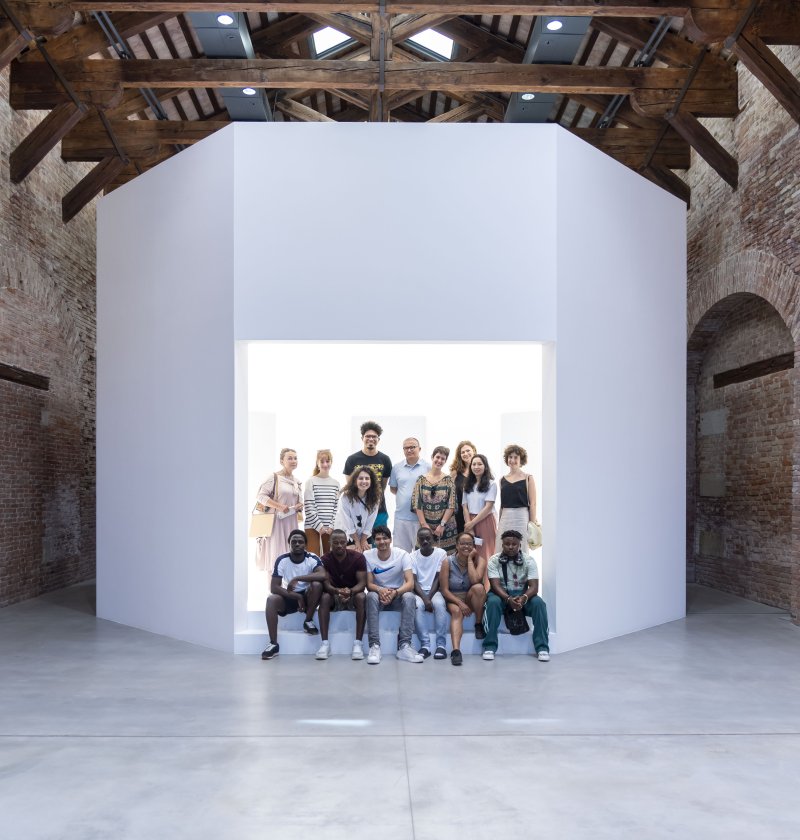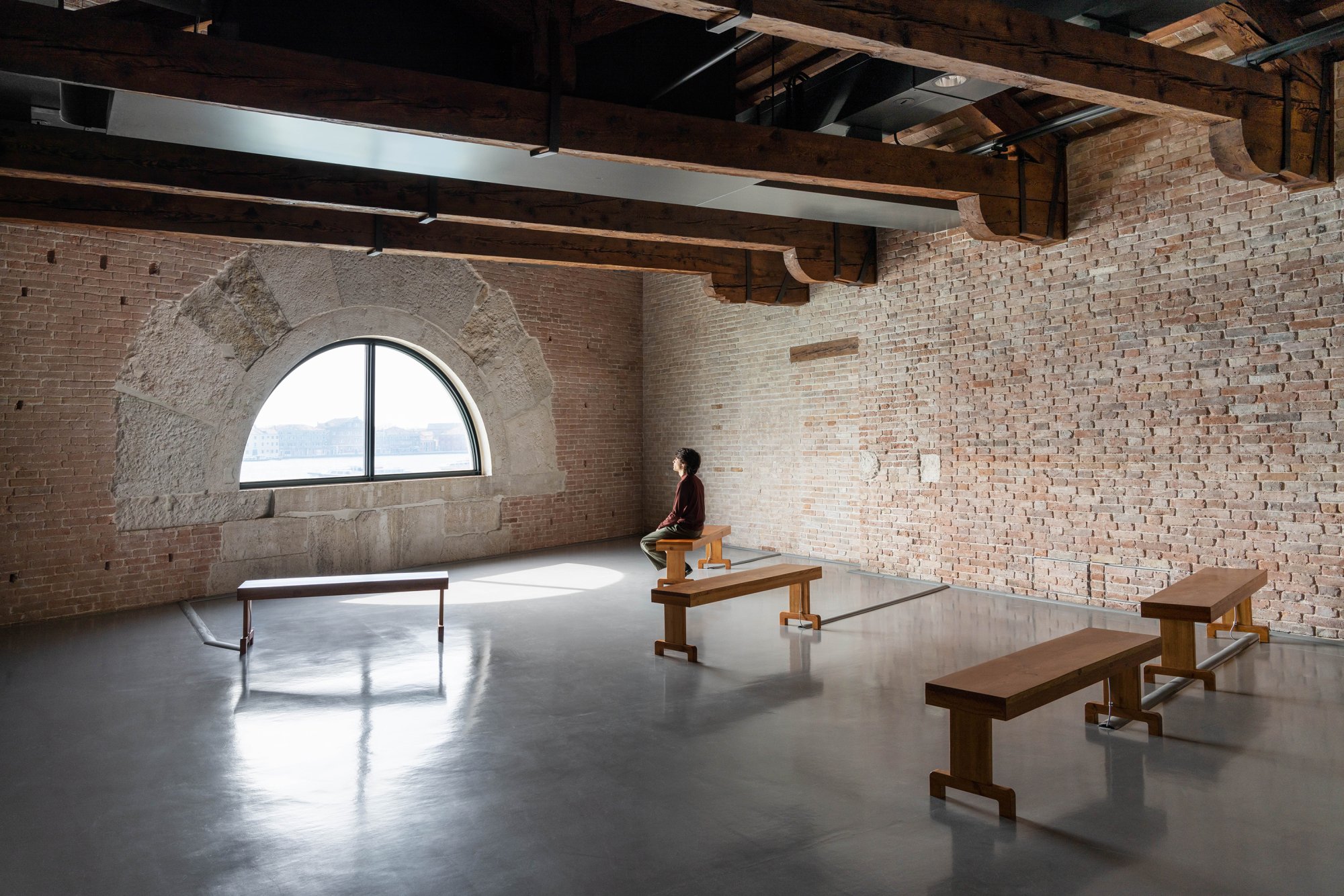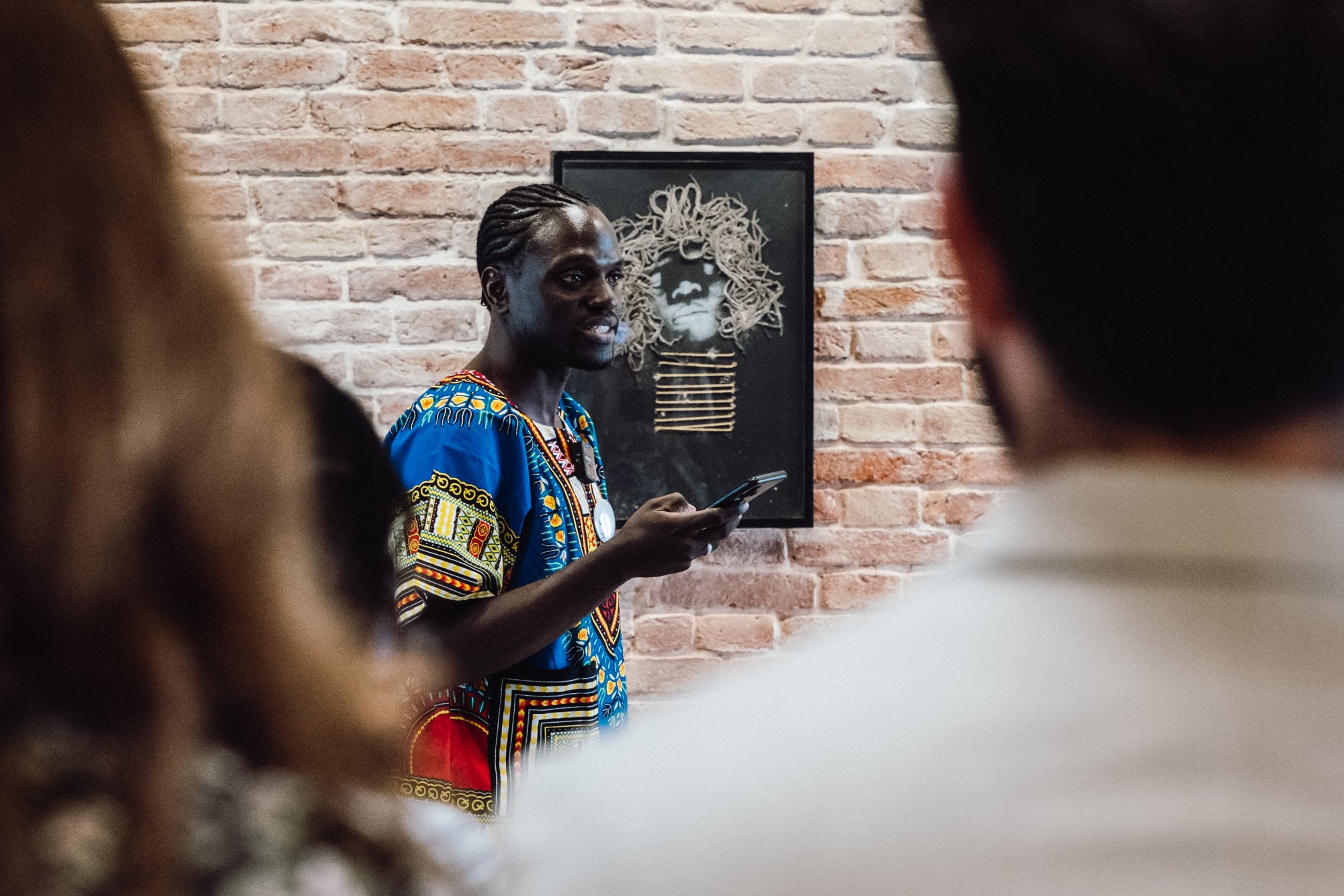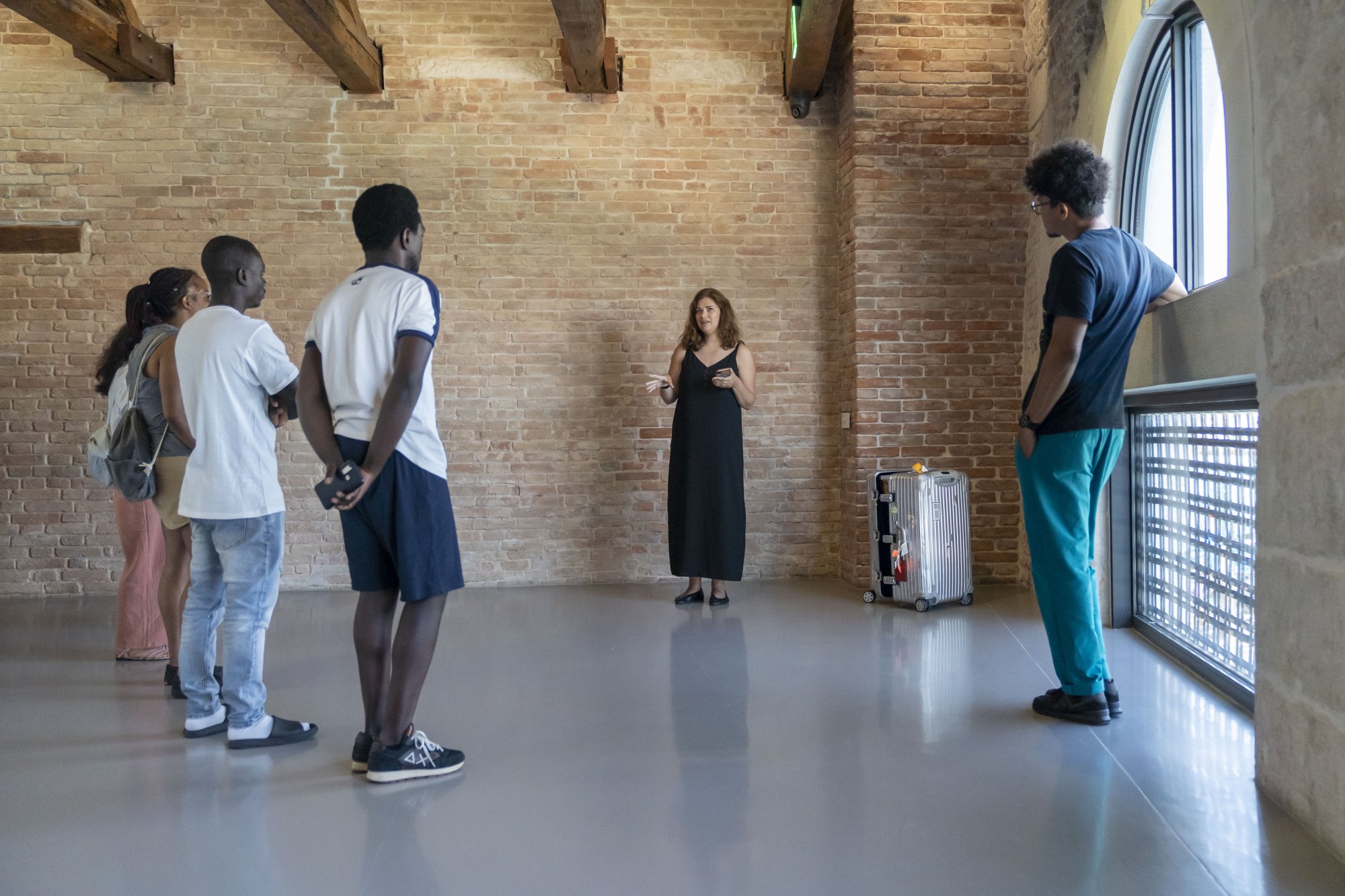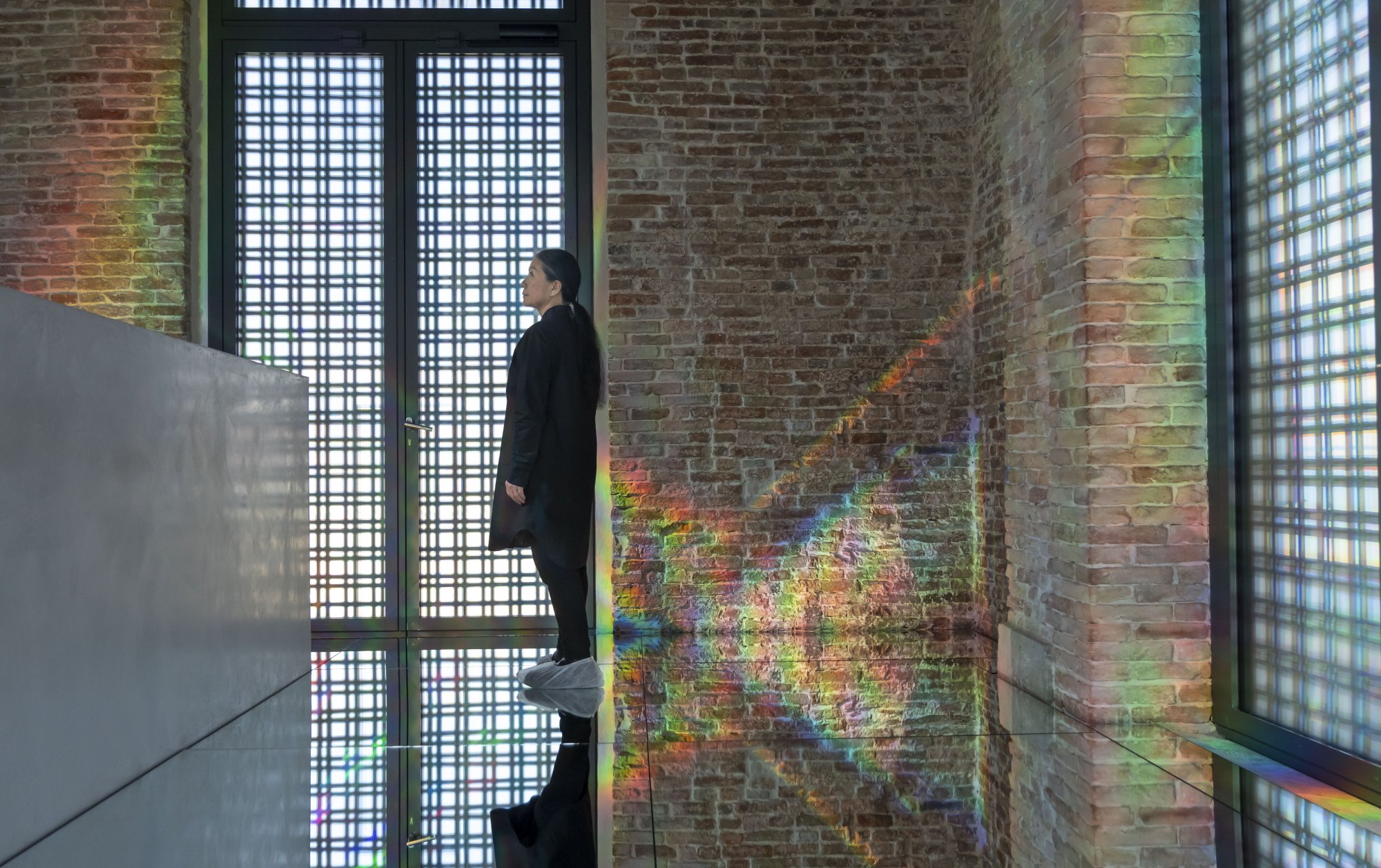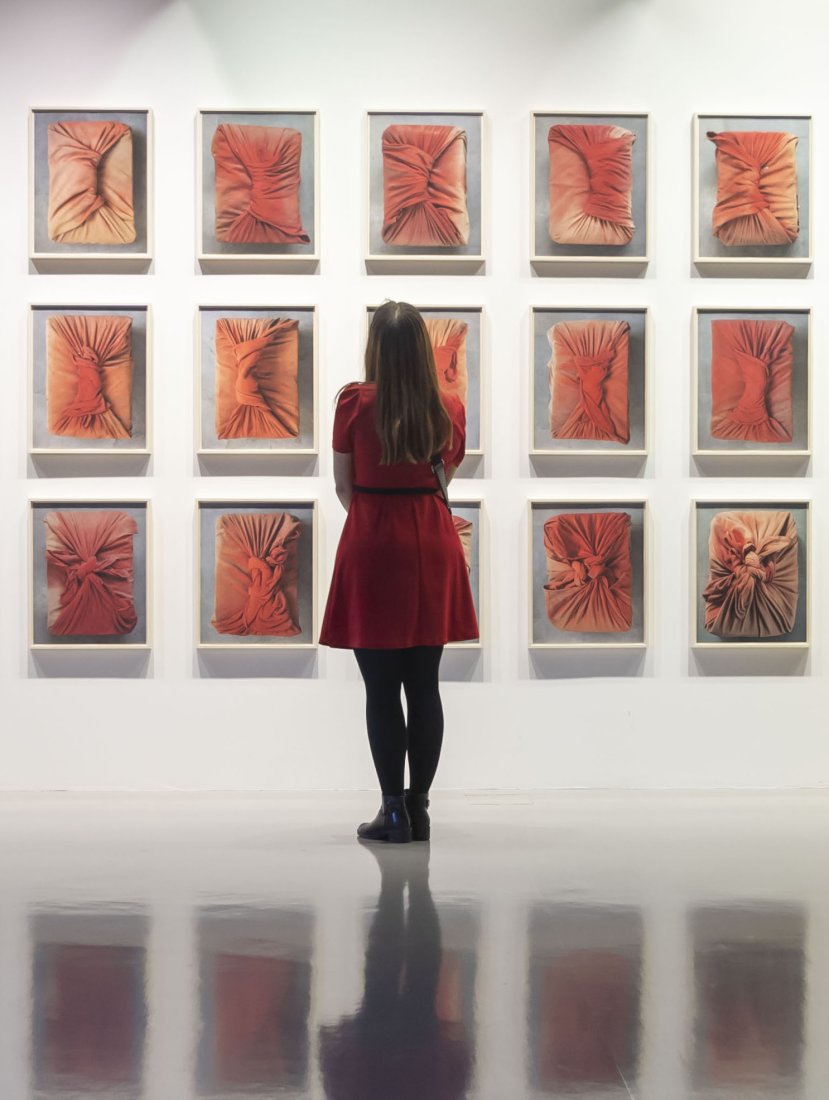"Icônes" seen by the participants of Altri Sguardi
Participants of the fifth edition of 'Altri' share their interpretation of some works presented in the exhibition "Icônes".
The fifth edition of the cultural exchange workshop "Altri Sguardi", opened to refugees, migrants or people with a migration background, took place from April to June 2023.
The participants developed personal interpretations of a few works of art chosen from those on display in the exhibition "Icônes" at Punta della Dogana. Guided by two tutors, they developed specific mediation and interpretation skills and shared, during a tour with the public, their personal point of view on the chosen works.
Listen to the stories of tutors and participants Moustaou Arouna (Togo), Messouho Coulibaly (Ivory Coast), Evgeniia Liubova (Russia), Sakina Mohammadi (Afghanistan), Lot Wilbroad Mutiti (Uganda), Leidy Pineda Gil (Dominican Republic), Hussain Rezai (Afghanistan), Zorica Stojkovic (former Yugoslavia, now Serbia), Elena Tikhomirova (Russia), Pacôme Tiomena (Cameroon), Abd Ullah (Pakistan).
The following quotations faithfully reproduce extracts from the audio tracks of the participants' voices. With their suggestions and approval, they preserve the speech characteristics with the cultural and linguistic specificities of each. For this reason, it was decided not to translate the speeches, but to keep only the original language versions.
The two tutors of the 2023 edition:
We really had many many days of sharing where, in the face of the fact that we came from so many different cultures, we were really able to see what the icons and works mean and have meant to each person in their own culture.
Elisa Etrari
Today perhaps we will see the result of this weeks' work in the exhibition where we did some reflections, saw some works, everyone had their own feelings and did, yes, their own reflections.
Gustavo Alfredo Garcia Figueroa
Ttéia 1,C (2003-2017) by Lygia Pape
Immaginate, film che voi guardate attraverso di cabina di meccanico, passa tramite luce del genere, non è vero? E ognuno ha sua percezione. Sono luci della chiesa, sono luci del bosco, no? Sono luci del mare tra le nuvole. E qui sono semplicemente fili metallici, di rame e di metallo dorato veramente.
Elena Tikhomirova, Russia
Prime (2016) by Camille Norment
Sedendoci sulla panchina potremmo sentire una vibrazione. Quando ho interagito la prima volta con quest’opera, mi è venuta in mente la frase della canzone di Zucchero – sono sicura che tanti di voi lo conoscete – “I'm crying someone else’s tears”, “sto piangendo le lacrime di qualcun’altro”. Ascoltando questa voce ho quasi iniziato a piangere le lacrime di queste persone, la voce di uomo mi sembrava a volte molto sofferente, altre volte come se il dolore stesse passando.
Evgeniia Liubova, Russia
There is usually an open discussion also of what the deceased would be remembered for, as life does not end with death, but continues in another realm according to the African belief. And therefore, are held in high regard and look at as icon. So, when people die in Africa, we believe they are not dead, they just go to another realm and are watching over us and we think them as icons.
Lot Wilbroad Mutiti, Uganda
Ombre indigène (2014) by Edith Dekyndt
It is not Edith Dekydt’s most famous piece of art, but it caught my attention, because it relates more to my country’s sacrifice and to the women in my country.
Sakina Mohammadi, Afghanistan
Untitled (Mirror) (2013) by David Hammons
Nello sciamanismo di alcune culture africane, lo specchio rappresenta un messaggio da parte degli antenati, una verità di cui nessuno si può appropriare perché è coperta. Quindi, anche in questa poetica, nell'arte lo specchio è la verità. In questa opera qua sono rappresentate le due verità.
Leidy Pineda Gil, Dominican Republic
A Cry From the Inside (1969) by David Hammons
In my opinion, the golden background shows spirituality, purity, and prestige. But the subject evokes tortured feelings, you know, these suppressed feelings. It seems that these feelings have been suppressed for such a long time in silence. At this point, he can't take it anymore.
Lot Wilbroad Mutiti, Uganda
Black Mohair Spirit (1971) by David Hammons
Throughout the continent, a person’s hairstyle could tell you a lot about who they are, who they were in terms of tribe, clan, and hierarchy. That is why, slave traders shaved the hair of all African people when they captured them, as a first step, as a process of systematic cultural and identity erasure. Just like in the portrait, ornaments were also unique parts of these tribes and also to just give identity.
Lot Wilbroad Mutiti, Uganda
Untitled (2010) by Robert Ryman
La pratica artistica di Ryman si è concentrata principalmente sull’esplorazione delle possibilità della pittura bianca e sulla sua interazione con la superficie di una tela. […] Questa simbologia del bianco si trova in diverse culture, sia nella vita di tutti i giorni che nell'arte.
Messouho Coulibaly, Ivory Coast
untitled (2021) by Danh Vo
Tornando alla funzione primaria dell'oggetto, una valigia è lo stesso oggetto per un viaggiatore e per un migrante? Che cosa metterebbe dentro la valigia una persona che parte per un viaggio? E che cosa metterebbe dentro un'altra persona, sapendo che non tornerà mai più a casa sua?
Evgeniia Liubova, Russia
Time Measures (2016) by Dayanita Singh
Questa fotografia presenta una tabula rasa, cioè un momento quando siamo nati. Siamo nati senza nessuna esperienza, senza nessun dolore, senza nessuna, nessuna cosa che ci blocca di andare avanti. Poi avanti andando con la vita, si sono formati dei nodi, nodi diversi, con chiusure diverse.
Zorica Stojkovic, former Yugoslavia, now Serbia
Mothabeng (2022) by Dineo Seshee Bopape
Elle a transporté la culture africaine, elle s’est inspirée de la culture du 19e siècle, 19e-20e siècles africaine. C’est à dire, au Cameroun, chez nous, à l’ouest du Cameroun, ceci c’est une maison, un intérieur, c’est une maison pour nous […]. Mais si tu en vois encore en Afrique, mais uniquement pour le chef, mais c’est plus d’habitation familiale, […]. Non, c’est maintenant pour le chef, pour parler des traditions du village, parler des décisions du village.
Pacôme Tiomena, Cameroon
To Breathe-Venice (2023) by Kimsooja
This piece of art, this is a combination between three sounds or three voice: Islamic chant – Islamic voice –, Gregorian chant, and also Tibetan chant. So, she mixed three voices of religions. To my understanding she wanted to present the coexisting of religion, different religions, different culture, because she wanted to say that we have to respect diversity, we have to respect different cultures, we have to respect different religions, we have to respect diversity.
Hussain Rezai, Afghanistan
Se voi avete la curiosità di leggere alcune sue interviste lei sempre risponde che in tradizione coreana, in tradizione religiosa di Estremo Oriente, è sempre una cosa molto sacra percezione della luce.
Elena Tikhomirova, Russia
Questo suono è molto importante. Perché è molto importante? Perché a parte che è una opera che andiamo a sentire e vedere, io la vedo come il problema di tutta la terra, adesso, in questo periodo che siamo. Perché la religione ci confonde tanto e ci dà anche difficoltà per vivere e ci crea tanti problemi. […] Dobbiamo solo cercare di capirci e darci questo tempo.
Moustaou Arouna, Togo
OPALKA 1965 / 1 - ∞, detail, Roman Opałka
So, this painting consist of numbers which start from one digit to an infinity. Each toiles consist of 35.272 digits which are a big amount of digits, not a small. And that’s why I like that too much.
Abd Ullah, Pakistan
